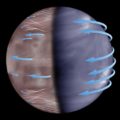Bacteria are the creatures which can be active even in the harshest environments like volcanos , cold space or environments of nearly zero gravity. This zero gravity bacteria have now led to a problem for astronauts to treat themselves against the bacterial infection in the space. It is reported that the bacteria named as ‘shape shifting’ were detected in the almost zero gravity of the space.
The researchers belong to the Bio Serve Space Technologies of the CU Boulder have fixed the experiment of culturing the E coli bacteria on the International Space Station (ISS). Then they targeted to treat them by using the several antibiotic gentamicin sulfate concentrations that is the drug which is used to kill them. In response, these cultured bacteria increased the cell numbers by 13 folds and reduction by 73 percent in the cell volume size as compared to an Earth. These findings are noted by the lead author of the study, Luis Zea from the Bio Serve Research Associate.
Luis Zea said in the statement that, “Both the increase in cell envelope thickness and in the outer membrane vesicles may be indicative of drug resistance mechanisms being activated in the spaceflight samples and this experiment and others like it give us the opportunity to better understand how bacteria become resistant to antibiotics here on Earth. This experiment and others like it give us the opportunity to better understand how bacteria become resistant to antibiotics here on Earth.”
While, a professor from the Ann, Stodieck said that, “The low gravity of space provides a unique test bed for developing new techniques, products and processes that can benefit not only astronauts, but also people on Earth.”
So do you like to read such articles , consider liking our page on Facebook here , following us on Twitter here ,or if you love some visual treatment .we make some high quality videos on YouTube as well which you can view here . have a great day :). Visit our hompage HERE for the LATEST SCIENCE NEWS.
credits : swiftnary



